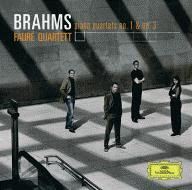Leon Botstein and American Symphony Orchestra Open 47th Season with U.S. Premiere of Vincent D’Indy’s Opera Fervaal
October 14th Concert Performance of Fervaal Is First of Six Performances by ASO at Avery Fisher Hall This Season, the Orchestra’s 17th as Part of “Great Performers at Lincoln Center”
“Operatic rescue missions have been the most valuable element of Leon Botstein’s directorship of the American Symphony Orchestra, a trend that continues with a concert performance of d’Indy’s ‘Fervaal’” —The New Yorker
The American Symphony Orchestra opens its 17th season in the “Great Performers at Lincoln Center ” series in Avery Fisher Hall on Wednesday, October 14 at 8pm, with the first U.S. performance of Vincent d’Indy’s Romantic grand opera Fervaal. Leon Botstein, the orchestra’s Music Director, conducts the concert performance. This first offering in the ASO’s 2009-2010 Lincoln Center season marks the start of the orchestra’s new policy of charging only $25 for every single ticket to its concerts. Tickets are available by calling (212) 868-9276 (9ASO) or visiting www.americansymphony.org.
Fervaal continues the ASO’s remarkable series of golden-age French Romantic operas-in-concert, which have included Dukas’s Ariane et Barbe-bleue, Chausson’s Le roi Arthus, and Lalo’s Le roi d’Ys. Both Claude Debussy and Paul Dukas evidently held Fervaal in higher esteem than Richard Wagner’s epics, but d’Indy’s Fervaal – like works by many of his French contemporaries – was inspired by Wagner, and among other familiar touches, the work has love/death and other themes in common with the latter’s Tristan und Isolde and Parsifal.
The ASO is also the resident orchestra at the Bard SummerScape festival, where its recent performances of the grand Romantic French opera, Les Huguenots, by Giacomo Meyerbeer, earned unanimous praise. It was the crowning achievement of SummerScape, dedicated to the exploration of “Wagner and His World,” and the production was described by the New York Times as “a chance to enter into the cultural mind-set of a rich era in opera history. ... Mr. Botstein once again deserves credit for an overdue rescue job.”
Vincent d’Indy (1851-1931) was 20 when France went to war with Prussia , but despite being an ardent Roman Catholic and French patriot, d’Indy decided to devote himself to his musical career rather than join the troops. In 1876 he attended the Bayreuth premiere of Wagner’s Ring, and not long afterward undertook an operatic adaptation of the Swedish poem Axël, by Esias Tegnér, which he eventually turned into Fervaal, his masterpiece. By the time Fervaal was complete, d’Indy was well known for his lovely Symphonie sur un chant montagnard français (Symphony on a French Mountain Air). The composer wrote his own libretto from Tegnér’s Axël, moving it from 18th-century Sweden around the time of Charles XII to the dim medieval past in Celtic Cévennes in the French Midi (called Cravann in the opera). It concerns a wounded war-hero who is nursed to health by a mysterious woman – Guilhen, an enemy Saracen princess – with whom he falls in love. After he returns to battle against the Saracens, who are winning, she rejoins her father’s army. The two are ultimately reunited in death. Fervaal’s name recalls that of Parsifal (Percival), while Guilhen recalls a combination of Wagner’s Brünnhilde and Kundry. Even Fervaal’s Druid teacher Arfagard might be descended from Parsifal’s Gurnemanz. D’Indy himself wrote: “I have lived too close to the orbit of Wagner’s star not to have been fatally involved in his revolution.”
The composer referred to his work-in-three-acts (plus a prologue) as an “action musicale” and a “prose poem”, composing it between 1889 and 1895. Vincent Giroud writes in a program note for this American Symphony Orchestra concert:
“In another deliberate Wagnerian gesture, d’Indy based [Fervaal] on a strict leitmotiv system... combined with a symbolic use of tonalities (G major for Cravann, B major for war, D major for love, etc.). The orchestration...calls for large forces, including four saxophones...eight saxhorns...and even a mountain horn. The Théâtre de la Monnaie in Brussels, which hosted the premieres of several major [French] operas of the period (from Massenet’s Hérodiade to Chausson’s Le roi Arthus), staged it first in March 1897.”
The principals from the world premiere in Brussels also sang the French premiere at the Paris Opéra Comique the next year, by which time France was embroiled in “l’Affaire Dreyfus”. “The nationalist right, with which d’Indy wholeheartedly identified [was pitted] against the partisans of the unjustly accused Jewish captain [Dreyfus],” continues Giroud. “It would, of course, be grossly unfair to see Fervaal as an anti-Semitic tract of the kind d’Indy, to his discredit, deliberately attempted with his fourth (and last) opera, La légende de Saint-Christophe.”
Vincent d’Indy: Fervaal, Op. 40
U.S. premiere, opera-in-concert
Leon Botstein conducts the American Symphony Orchestra
Wednesday, October 14, at 8.00 PM
Avery Fisher Hall, Lincoln Center
All tickets $25

Comments